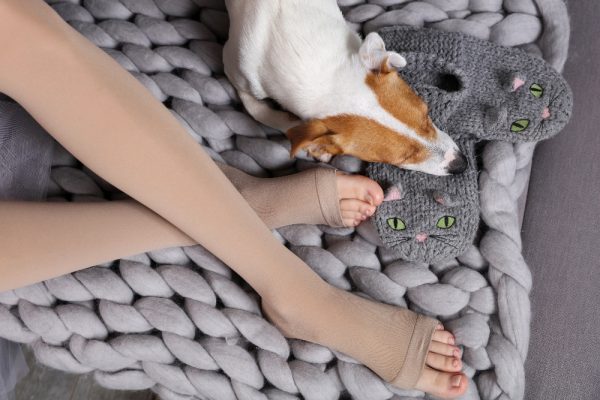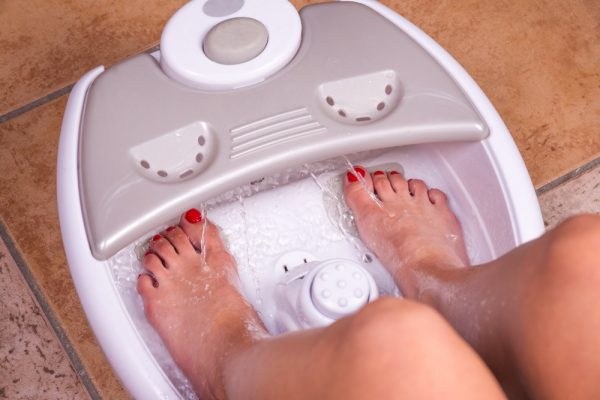Running is a beneficial activity that will keep in you in tip-top shape. Runner’s World outlines the many advantages of enjoying running as your primary way to stay healthy. These range from improved emotional health to strengthening joints, bones and even knees. There are almost countless reasons to make it your go-to workout.
Unfortunately, running also comes along with some risks. For example, as a runner, you have an increased risk of developing a common, yet painful condition of the foot that being an ingrown toenail. In fact, an ingrown toenail is one of the most common problems/injuries that could sideline you from hitting the road or the trail.
Read on to learn how to decrease your risk of experiencing this painful problem.

Ensure Your Running Shoes Fit Properly
Tight shoes that crowd the toes tend to increase the risk of developing an ingrown toenail. This is true for all types of footwear, but especially for athletic shoes intended to protect your feet during an activity like running. When you shop for shoes, go in the evening or afternoon. This is important because everyone’s feet tend to swell a bit as the day goes on. This means your feet will be at their largest in the afternoon or evening, so that’s when you need to shop. Also, bring along the right socks to ensure a proper fit. Try athletic shoes on with whatever socks you will wear when you run. If ingrown nails begin to be a common occurrence, you could try a wide toed option for your running shoes.
Trim Nails Properly
One of the most common causes of a painful ingrown toenail is improper nail trimming. To reduce your risk of developing an ingrown toenail, don’t cut your toenails too short. If you trim them too deep, you can inadvertently cause the sides of your toe to fold over itself, which can lead to a problem. Your nails should never be shorter than the edge of your toe. Also, make sure you trim your toenails straight across, not in an angle. Don’t round the corners.
Keep Feet Clean and Dry
It’s perfectly normal to have hot sweaty feet after a vigorous run. However, it’s not wise to leave your feet in this condition longer than you must. As soon as possible, clean and dry your feet. Otherwise, you will increase your risk of an ingrown toenail infection.
Address Poor Circulation
If you have poor circulation due to decreased arterial circulation, heart disease, or diabetes, there is little you can do other than keep an eye on your feet for signs of poor circulation other than treat your conditions. If you have a history of tobacco use, consider quitting as this is a known cause of poor circulation.

Be on the lookout for the following signs your circulation might not be ideal:
- Swelling in the legs, feet or ankles.
- Cold feet or hands
- Tingling or numbness in the feet and hands
- Muscle and joint cramping
- Varicose veins
- Ulcers in the legs or feet
- Changes in the color of your skin
- Fatigue
- Difficulty concentrating and memory loss
If you notice any of the above symptoms of poor circulation, address this issue with your doctor. Be aware, you are at an increased risk for ingrown toenails when your circulation isn’t ideal.
Avoid Problematic Pedicures
A pedicure is a luxury service that you might enjoy immensely. However, be aware, there are many factors that go along with pedicures that can lead to or exasperate an ingrown toenail. If your technician gets overly aggressive in trimming, they can actually cause an ingrown toenail to occur. In addition, nail tools and spa tubs need to be properly sanitized to ensure they do pass bacteria to your nails and skin from other guests.
At-Home Treatment Self-Treatment of an Ingrown Toenail: Home Remedies
If you want to try some self-treatment before seeking professional assistance dealing with your ingrown toenail, we recommend the following:

- Soak it & Treat it: Combine warm water and Epsom salt and soak your affected foot for around 30 minutes. Remove from water and dry the area. Then, apply a bandage and antibiotic ointment to the ingrown toe. You can soak up to three times a day.
- Try to Remove it Yourself: If you are sure there is no infection present in your ingrown nail, you can try to remove it yourself. To do this, use sanitized nail-cutting tools. To make the skin easier to manipulate, soak it in warm water and Epsom salt first. Be sure to apply antibiotic ointment to the area after you have removed the nail to prevent infection. If you don’t want to attempt this or suspect an infection, we recommend an office visit to let us help you with the issue.
- Take Pain Reliever: Take acetaminophen or ibuprofen to help reduce pain.
- Give Feet Room: When treating an ingrown nail, make sure toes have plenty of room in your shoes. If necessary, you might opt for open-toe shoes for the time being.
- Use Floss: In some cases, you can manipulate the nail and get it to stop growing improperly by lifting the edge of the toenail with dental floss and moving it away from the skin.
Get In & Treated Today
As a runner, one of the worst feelings is being sidelined by an injury when all you want to do is run. Thankfully, at The Foot & Ankle Group, we can work you in quickly and help you get relief from this painful condition. If you have tried to treat the problem yourself with no success or simply are in too much pain to try, contact us today at (239) 936-5400 and let us help you get back on the road again and enjoying your favorite activity.
Categorized in: Blog